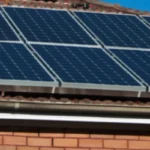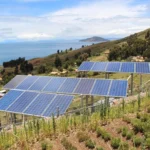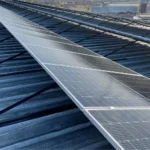Solar Industry Faces Growing Losses from Underperforming Equipment
Solar Industry Faces Growing Losses from Underperforming Equipment
According to the Raptor Maps’ Global Solar Report, the amount of power loss due to equipment anomalies has nearly doubled from 1.61% in 2019 to 3.13% in 2022. This trend is expected to continue, with anomaly-driven power loss potentially growing to almost 6% by 2025.
The report also found that for sites larger than 200 MW, average underperformance due to anomalies has more than tripled since 2019, resulting in an estimated annual revenue loss of $82M for the 24.5 GW of assets analyzed in 2022, translating to an average loss of $3,350 per MW. Extrapolating these findings to the total global installed PV capacity (excluding residential) as of the end of 2021, the report estimates that the industry is facing a $2.5B annual revenue loss.
Furthermore, the report revealed that polycrystalline modules are more likely to show module-level and submodule-level anomalies on inspection compared to thin film and monocrystalline modules. Asset owners are increasingly looking for more granular data, with 32% of Raptor Maps customers requesting IEC-compliant Comprehensive Inspections in 2022, up from 23% in 2021.
The report emphasizes the need for asset owners and managers to monitor equipment performance over time and proactively identify maintenance issues and warranty claim opportunities.
Overall, the Raptor Maps Global Solar Report emphasizes the importance of proactive monitoring and maintenance to ensure the long-term health and profitability of solar assets. With the use of innovative technologies solar stakeholders can take steps to address the growing issue of equipment anomalies and underperformance, and help solar installations flourish for decades to come.
In conclusion, the solar industry needs to take proactive steps to address the growing problem of underperformance due to equipment anomalies. Raptor Maps’ Global Solar Report provides valuable insights and benchmarks to help asset owners and managers monitor their solar assets’ health and identify issues before they become costly problems.
Suggested Articles

Solar Panel Efficiency and Temperature: What You Need to Know
The stronger the sun, the higher the temperature and more energy your solar panels produce, right? No.

How a String Monitoring Box Works in Residential Solar Systems
Understand how a string monitoring box helps track and protect your home solar panels for maximum efficiency and safety

EIB Green Hydrogen India: €1 Billion Investment to Boost Clean Energy Transition
The European Investment Bank (EIB), the bank of the European Union, has joined forces with the India Hydrogen Alliance (IH2A) to increase support for the development of green hydrogen projects across India.

New Loan Scheme for solar rooftop projects by IREDA
IREDA has introduced a new loan scheme to make rooftop solar projects more accessible. This guide covers eligibility criteria, benefits, application process, and how businesses and homeowners can leverage this scheme to invest in clean and affordable solar energy.

Save on Electricity in Haryana Using Net Metering: A Complete Guide
Learn how to save on electricity in Haryana with net metering. Step-by-step guide on benefits, installation, and cost savings for your home or business

Sanctioned Load & Rooftop Solar: Everything You Need to Know
Learn why sanctioned load is crucial before rooftop solar installation. Understand its role, process, and impact on solar panel efficiency and subsidy eligibility.

Rooftop Solar: Reduce Your Electricity Bill and Increase Savings
Discover how installing a rooftop solar system can help you save on electricity bills, reduce peak demand charges, and take advantage of government incentives.

Understanding Solar Cells and Modules: A Complete Guide
Understand solar cells and modules, their functioning, and advantages for residential and commercial solar installations.